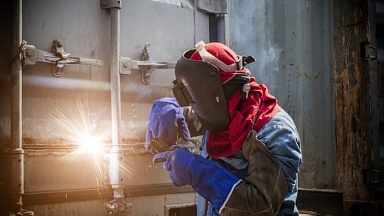In 1999, the Partnership and Cooperation Agreement between the EU and Uzbekistan came into force.
Over the past ten years, mutual trade between Uzbekistan and the countries of the EU has remained multi-directional, but the total amount of trade has increased many times over. Exports from the EU increased from $1.5 billion in 2012 to $3.9 billion in 2022, whilst imports from Uzbekistan increased from $301 million to $827 million over the same period.
In the first nine months of 2023, the flow of physical cargo increased in both directions, but whilst exports from Uzbekistan rose by 17%, those from the EU went up by only 9%. During 2023, the volume of imports to the EU from Uzbekistan has risen markedly from 358 thousand tons to 420 thousand tons and is likely to set a new record for the year; this will maintain Uzbekistan’s current net trade surplus with the EU.
The main commodities fueling the absolute increase in physical imports to the EU from Uzbekistan for the nine months of 2023, compared to the same period in 2022 are: potash fertilizers, nitrogen-based fertilizers, rolled sheets.
In terms of modes of transportation by which goods enter the customs territory of the EU, railway shipments dominated the cargo flows from Uzbekistan to the EU in 2023, accounting for 44% of all physical imports. By comparison, road transportation accounted for 36%, and shipment by sea for just 16%. Almost 70% of the return cargo flow from the EU to Uzbekistan is by road, with deliveries by rail accounting for only 12%. A re-orientation of road shipments to the railways would seem to be the most obvious way of developing transport sustainability, and a study of the possibilities and limitations of such a transition is an urgent recommendation.
The volume of cargo transportation by rail in the EU-to-Uzbekistan direction continues to decrease, whilst that flowing in the Uzbekistan-to-EU direction continues to increase. The shifting of cargo flows between Uzbekistan and the EU from road to rail remains a viable option.
The dynamic development of the Uzbek economy can be largely explained by the country having to «catch-up» with its neighbors and a significant increase in the workforce. At the same time, the country’s convergence in income levels with Kazakhstan — the economic powerhouse of the region — is relatively slow, and the gap remains significant.
The geostrategic position of Central Asia poses challenges to the countries of the region in respect of access to maritime transport, reducing costs associated with the crossing of state borders, and accelerating the region’s integration into the global system of transportation corridors.
In recent years, Uzbekistan has been actively taking practical measures to develop its existing multi-modal transport corridors and create new ones, in order to improve the transportation and communication links between Central Asia and Europe. This is largely due to the tasks of deepening the country’s integration into the global transport and logistics network and increasing the potential of Uzbekistan’s national transport system being provisioned in the updated version of the Uzbekistan 2030 strategy document.



